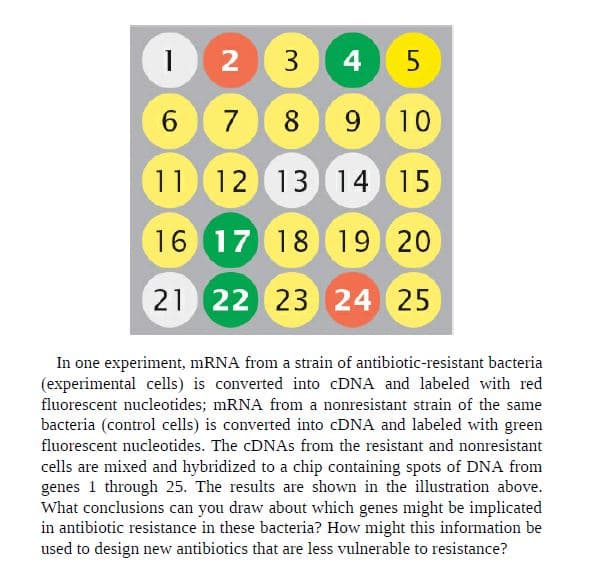2 3 4 5 6 9 10 11 12 13 14 15 16 17 18 19 20 21 23 24 25 In one experiment, MRNA from a strain of antibiotic-resistant bacteria (experimental cells) is converted into CDNA and labeled with red fluorescent nucleotides; mRNA from a nonresistant strain of the same bacteria (control cells) is converted into CDNA and labeled with green fluorescent nucleotides. The CDNAS from the resistant and nonresistant cells are mixed and hybridized to a chip containing spots of DNA from genes 1 through 25. The results are shown in the illustration above. What conclusions can you draw about which genes might be implicated in antibiotic resistance in these bacteria? How might this information be used to design new antibiotics that are less vulnerable to resistance?
Gene Interactions
When the expression of a single trait is influenced by two or more different non-allelic genes, it is termed as genetic interaction. According to Mendel's law of inheritance, each gene functions in its own way and does not depend on the function of another gene, i.e., a single gene controls each of seven characteristics considered, but the complex contribution of many different genes determine many traits of an organism.
Gene Expression
Gene expression is a process by which the instructions present in deoxyribonucleic acid (DNA) are converted into useful molecules such as proteins, and functional messenger ribonucleic (mRNA) molecules in the case of non-protein-coding genes.
Microarrays can be used to determine relative levels of gene expression.
In one type of microarray, hybridization of red (experimental) and green
(control) labeled cDNAs is proportional to the relative amounts of
mRNA in the samples. Red indicates the overexpression of a gene and
green indicates the underexpression of a gene in the experimental cells
relative to the control cells, yellow indicates equal expression in
experimental and control cells, and no color indicates no expression in
either experimental or control cells.

Trending now
This is a popular solution!
Step by step
Solved in 2 steps









